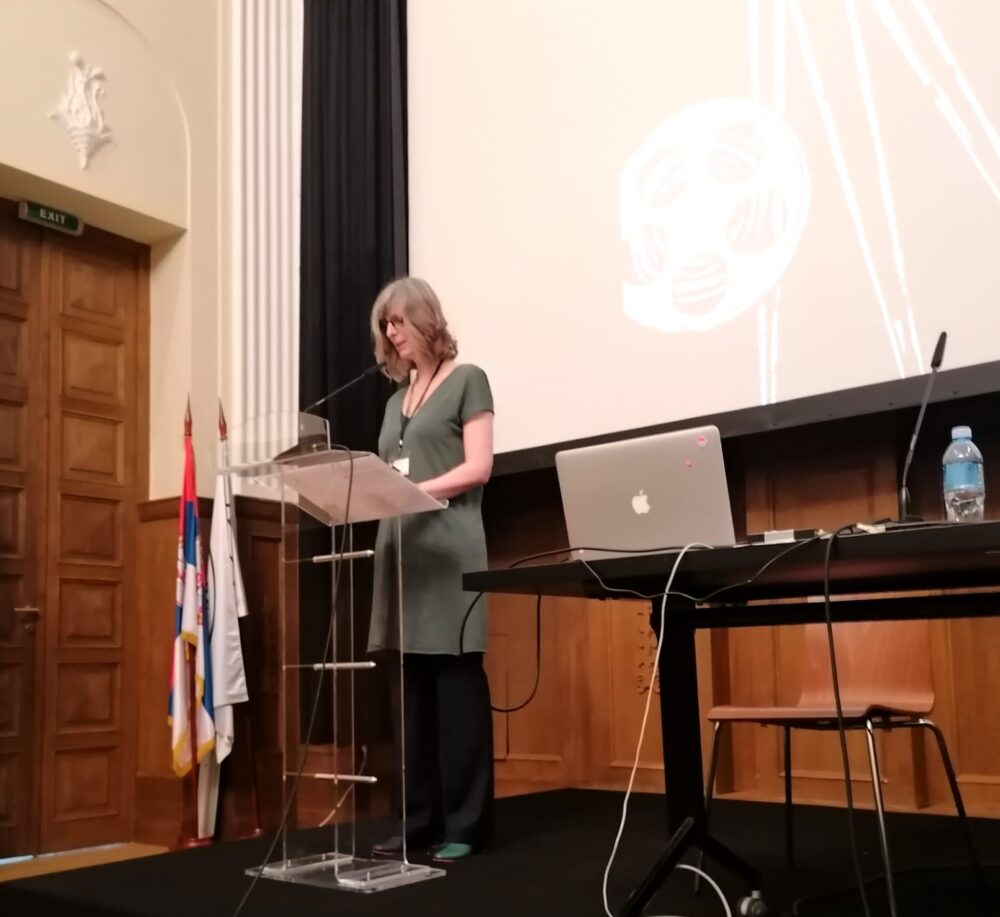Ivana Radovanovic Novakovic speaks on the Film and Analytical Psychology

Film and analytical psychology, (the conference) aims to provide a mental space for films and analytical psychology to meet each other with these words the initiative is announced on the website. Do you think this coniunctio has taken place/took place? Which possible developments of this contact can we hope for in the future?
IRN: The long-planned conference on Film and Analytical Psychology finally took place from June 2 to 4 this year. The intention and wish of the conference organizers was to open an active dialogue between analytical psychology and film art, which would connect these two fields of human psyche research and bring the two discourses together. What is the impression of the organizers after the conference, and what is confirmed in many ways by our guests in the survey that we sent to all participants, especially lecturers, both analysts and film workers, the goal we set for the conference was fulfilled. The entire conference was rated 9.4 (out of 10).
We are very pleased that we managed to bring the film academic community into the dialogue, two great professors of film theory from the Faculty of Dramatic Arts in Belgrade, who brought a fresh look at the film from a position that is different from the analytical reading of the film, but very relatable to analytical psychology, both semantically and conceptually. As well, the interview that Mrs. Chiara Tozzi conducted with this year’s winner of the Mercurius Prize, Mr. Giuseppe Tornatore, presented in a very direct and warm way the almost natural kinship of the filmmaking process and the stages of active imagination in analytical psychology. During the conference participants witnessed an extremely deep semantic interconnection of analytical and film concepts of trauma, evil, active imagination, beauty and sublimation, individuation, passionate inspiration, as well as a special review of the symbolic use of film elements such as silence, sound, spatial orientation, movement, repetitiveness in articulation expressions of the psyche.
The special quality of the conference was contributed by several exceptional clinical studies that, through the language of film, evoked analytical processes in working with patients and the use of film as amplification in clinical work, both in the direction of projecting the patient’s content onto the film, as well as recollection and internal transformation of the subject.
In four discussion groups, the participants had the opportunity to experience the lively dynamics of the dialogue between the psyche and the film, in four very different ways: through the illustration of imaginative work with adolescents, through the dramatic presentation of a failed individuation in Visconti’s film “La Caduta degli Dei”, immersing themselves in the fairy tale of Maya Deren and being taken into the fantastic screen adaptation of Bulgakov’s novel “The Master and Margarita”.
And last but not least, the venue where the conference was held was the Yugoslav Cinematheque, an important temenos for Serbian culture and an iconic place of Belgrade’s cultural and film scene. We believe that such a beautiful and meaningful environment was an exceptional container, a vessel in which such a wonderful conjunction of film and analytical psychology took place. This is exactly confirmed by the ratings given by the participants for the conference venue (9.7 out of 10).
I am very happy to say that the first conference “Film and Analytical Psychology” succeeded in establishing a mental space for meeting and connecting film and analytical psychology. I am sure that the conference in Rimini, as well as all subsequent conferences on Film and Analytical Psychology, using Belgrade’s experiences, will be the ways of moving the Soul through moving images of film art.
Can we take stock of the early feedback received?
IRN: In the attachment, I am sending you the complete report of the results of the survey that we sent to all conference participants. We received a total of 43 responses.
Although some responses are authored, responses and authors are not linked in the report. Most colleagues did not state their first and last name. Please use the survey results with discretion.
How many and which countries have take part to the conference?
IRN: We were delighted and honored to host the guests from 16 countries at the FAP conference.
There were people from:
Argentina, Austria, Bulgaria, Czechia, Greece, Hungary, Israel, Italy, Poland, Romania, Russia, Serbia, Slovenia, Switzerland, United Kingdom and United States of America.